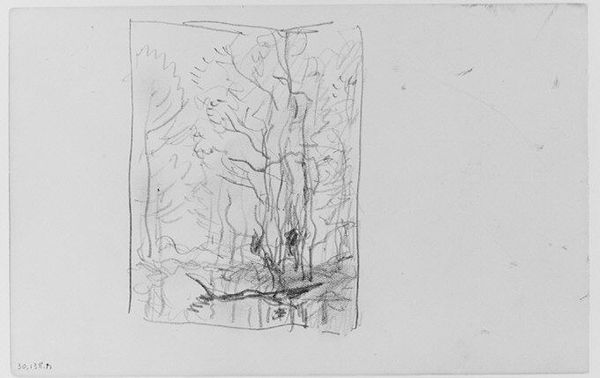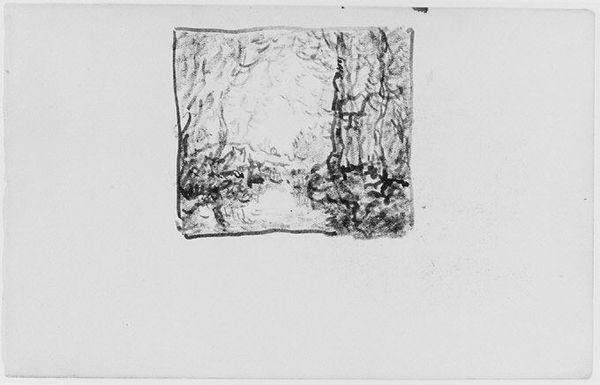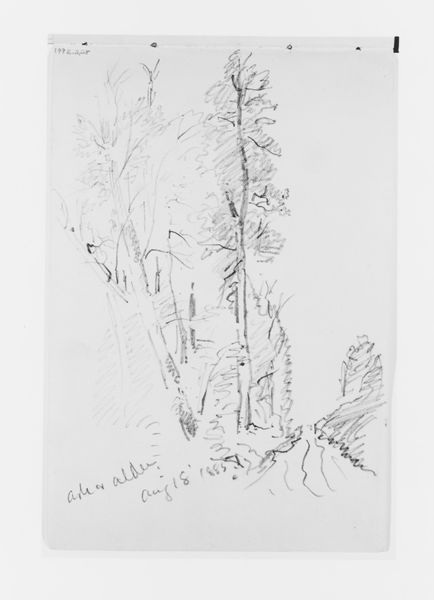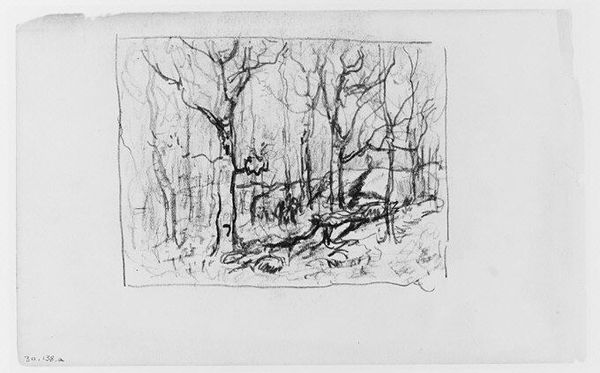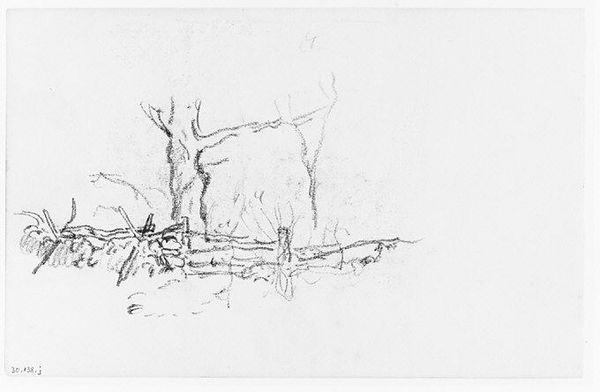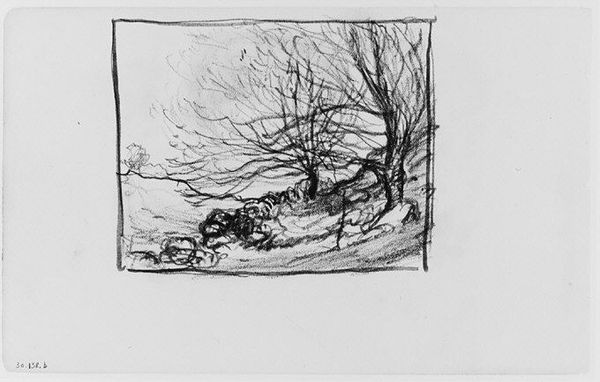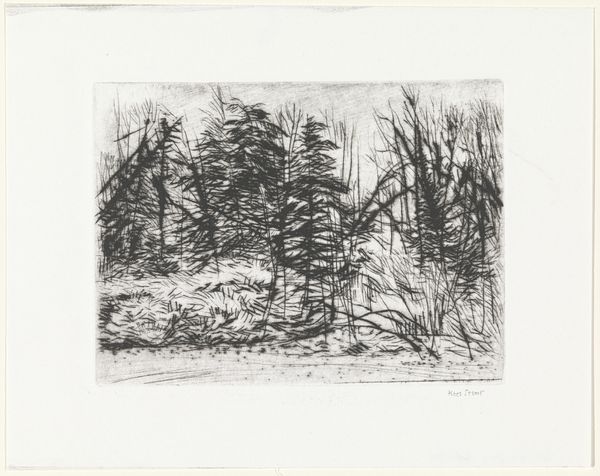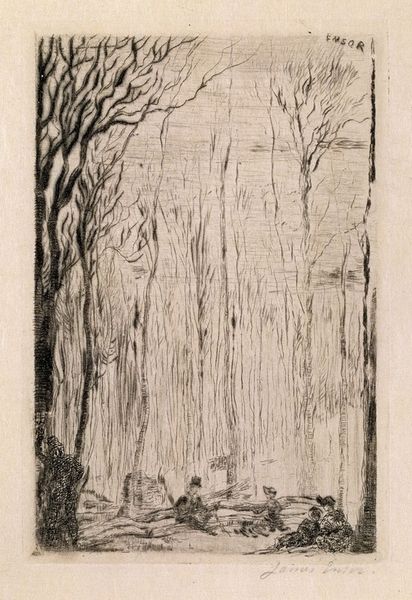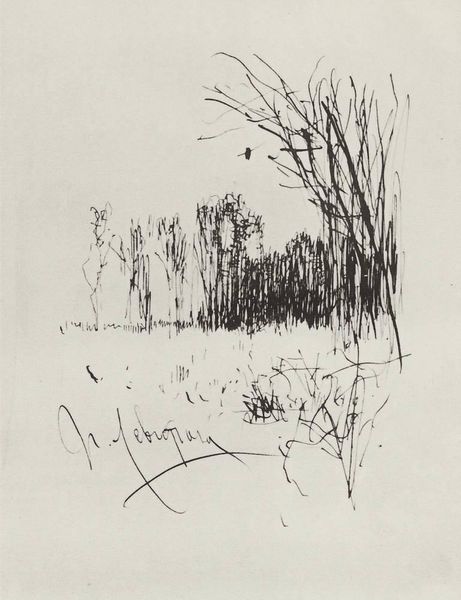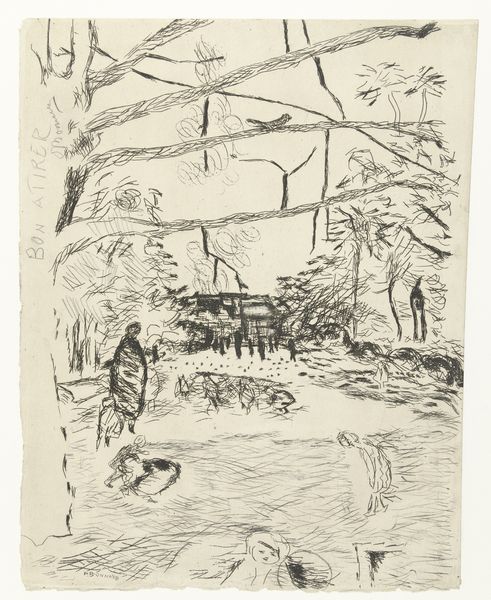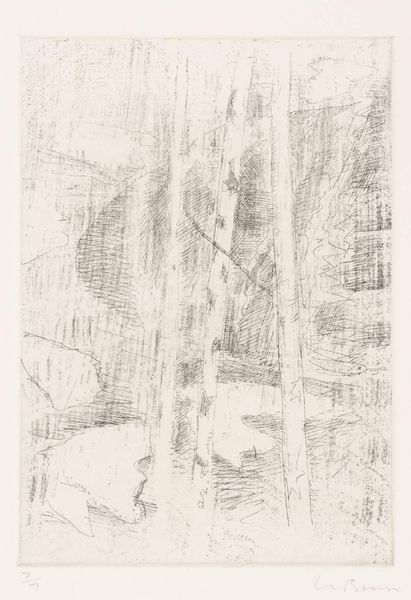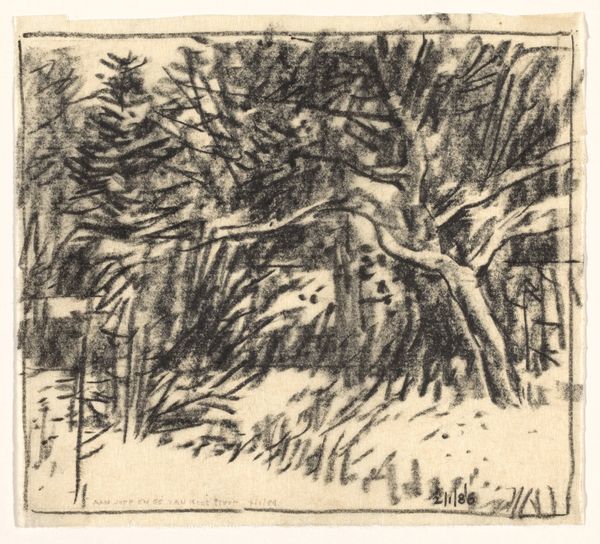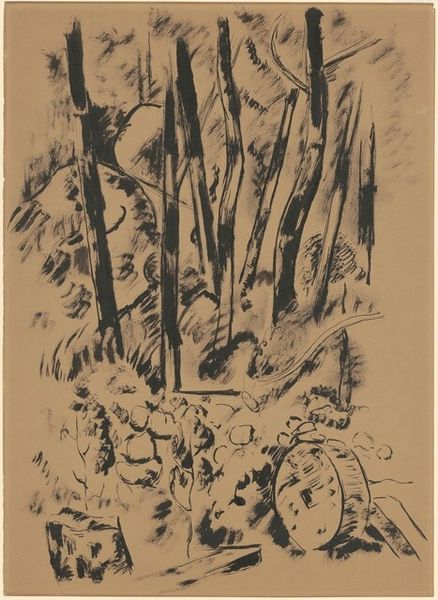
Trees and Rocks in a Forest (from Sketchbook) 1858 - 1916
0:00
0:00
drawing, paper, ink, pencil, graphite
#
drawing
#
pen sketch
#
landscape
#
paper
#
ink
#
forest
#
ink drawing experimentation
#
pencil
#
line
#
graphite
#
realism
Dimensions: Sheet: 4 7/8 x 7 7/8 in. (12.4 x 20 cm)
Copyright: Public Domain
Curator: This is "Trees and Rocks in a Forest" by Henry Ward Ranger, likely from his sketchbook and dating between 1858 and 1916. It's currently housed at the Metropolitan Museum of Art. Editor: It feels instantly intimate. It's a glimpse, like catching sight of something in the woods out of the corner of your eye. The stark contrast of the dark graphite against the pale paper draws you right in. Curator: Note how the stark linearity, the artist’s deliberate use of line work, is indicative of the Realism movement. It avoids idealization, focusing on a direct and almost documentarian approach. Editor: It is created from graphite, ink and pencil. The raw quality of those materials really speaks to me. You can almost feel the artist's hand moving across the page, testing different pressures to get this affect of volume in just simple sketched out boulders in front. There is something about its nature as a sketch that is inviting: an exercise in a visual practice. Curator: The bare trees, so vulnerable without their leaves, also suggests a symbolic exploration of winter or perhaps even the later stages of life, bare as we become older. The forest motif, a place of hidden mysteries in so much lore, might serve as the psyche, something internal being laid out, as the artists explores the forest’s visual representation on paper. Editor: Right, and it’s that simplicity that really strikes me. We have to consider that paper itself has always been made out of processed trees or other plant fibers; its creation from vegetal material transforms this artistic object into an artifact tied intimately to both commerce and environment. The pencil and ink—similarly produced— are the means that the forest reveals itself through in visual description. Curator: Absolutely. And think about the time period; 1858 to 1916. The materials reflect a historical context, one far less reliant on synthetic materials and revealing that our visual lexicon still can access older styles, a conversation over time between making materials. Editor: It does invite contemplation about not just what we see, but how the landscape around us informs the very tools and support that allow for its expression and experience, too. Curator: A fantastic synthesis, really, where nature mediates its representation both visibly, emotionally and, indeed, materially.
Comments
No comments
Be the first to comment and join the conversation on the ultimate creative platform.
